MARIANI’S
Virtual Gourmet
June 5, 2022
NEWSLETTER
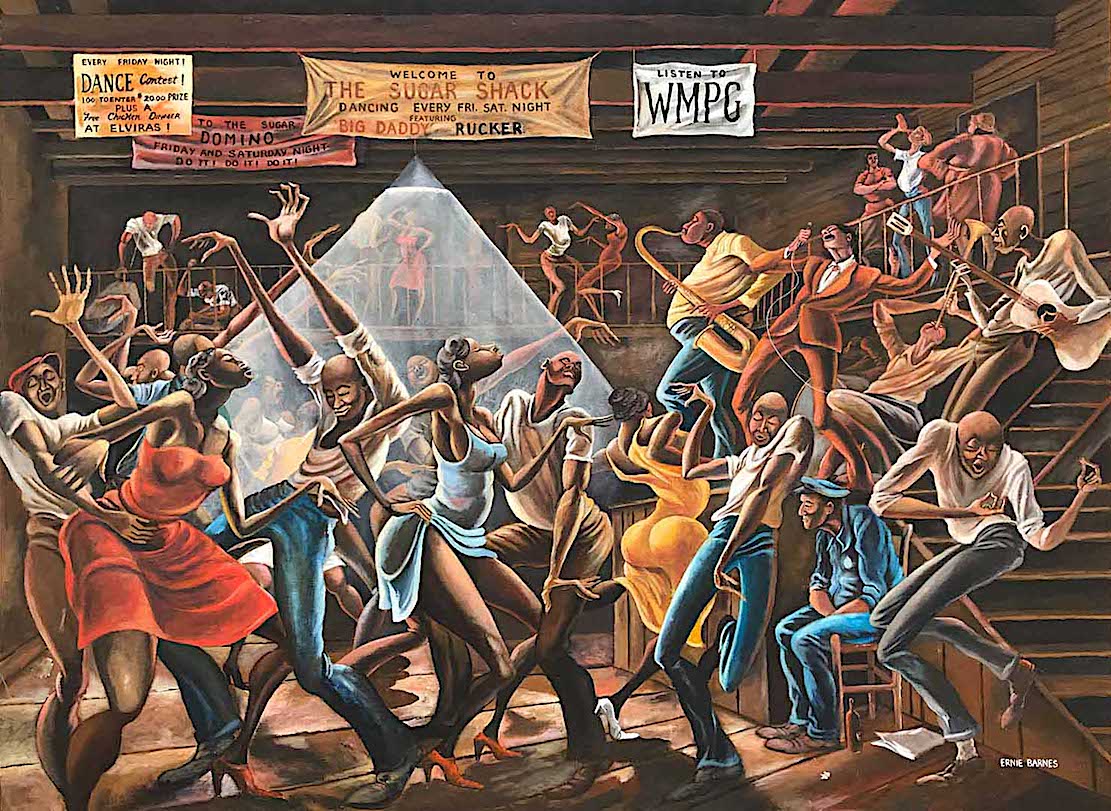
❖❖❖
IN THIS ISSUE
WHAT'S IN A NAME?
THE TRUTH ABOUT "WAGYU" AND "KOBE" BEEF
By John Mariani
NEW YORK CORNER
MARK'S OFF MADISON
By John Mariani
ANOTHER VERMEER
CHAPTER TWENTY-TWO
By John Mariani
NOTES FROM THE WINE CELLAR
WINES FOR A FATHER'S DAY BBQ
By John Mariani
❖❖❖
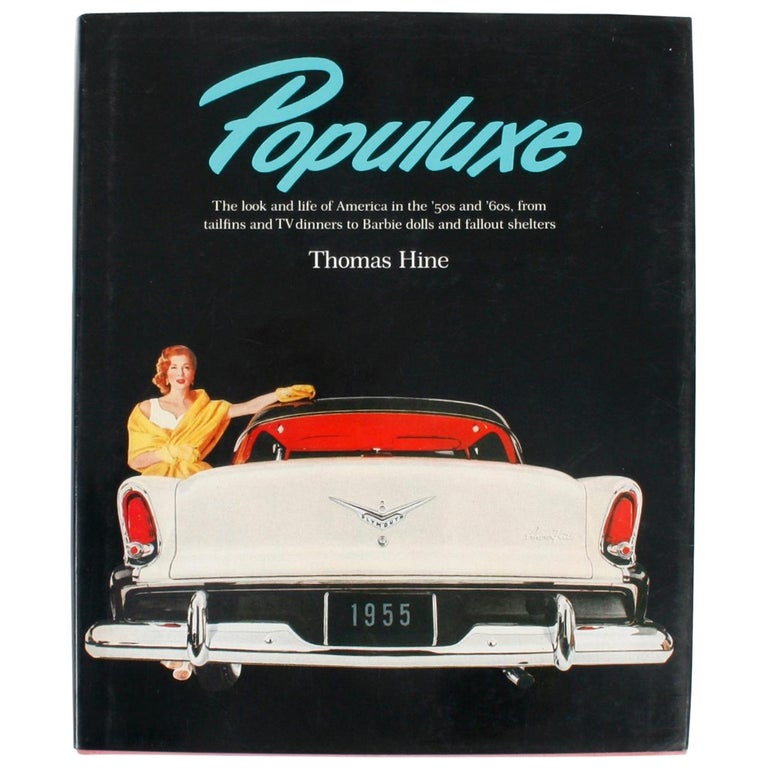 author of the book POPULUXE.
Go to: WVOX.com.
The episode will also be archived at: almostgolden.
author of the book POPULUXE.
Go to: WVOX.com.
The episode will also be archived at: almostgolden.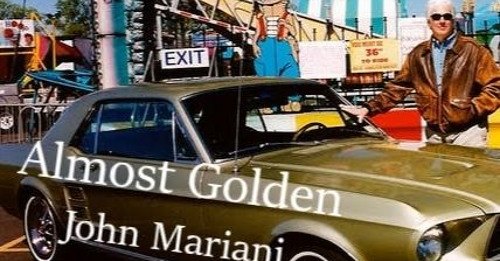
❖❖❖
WHAT'S IN A NAME?
THE TRUTH ABOUT KOBE BEEF
By John Mariani
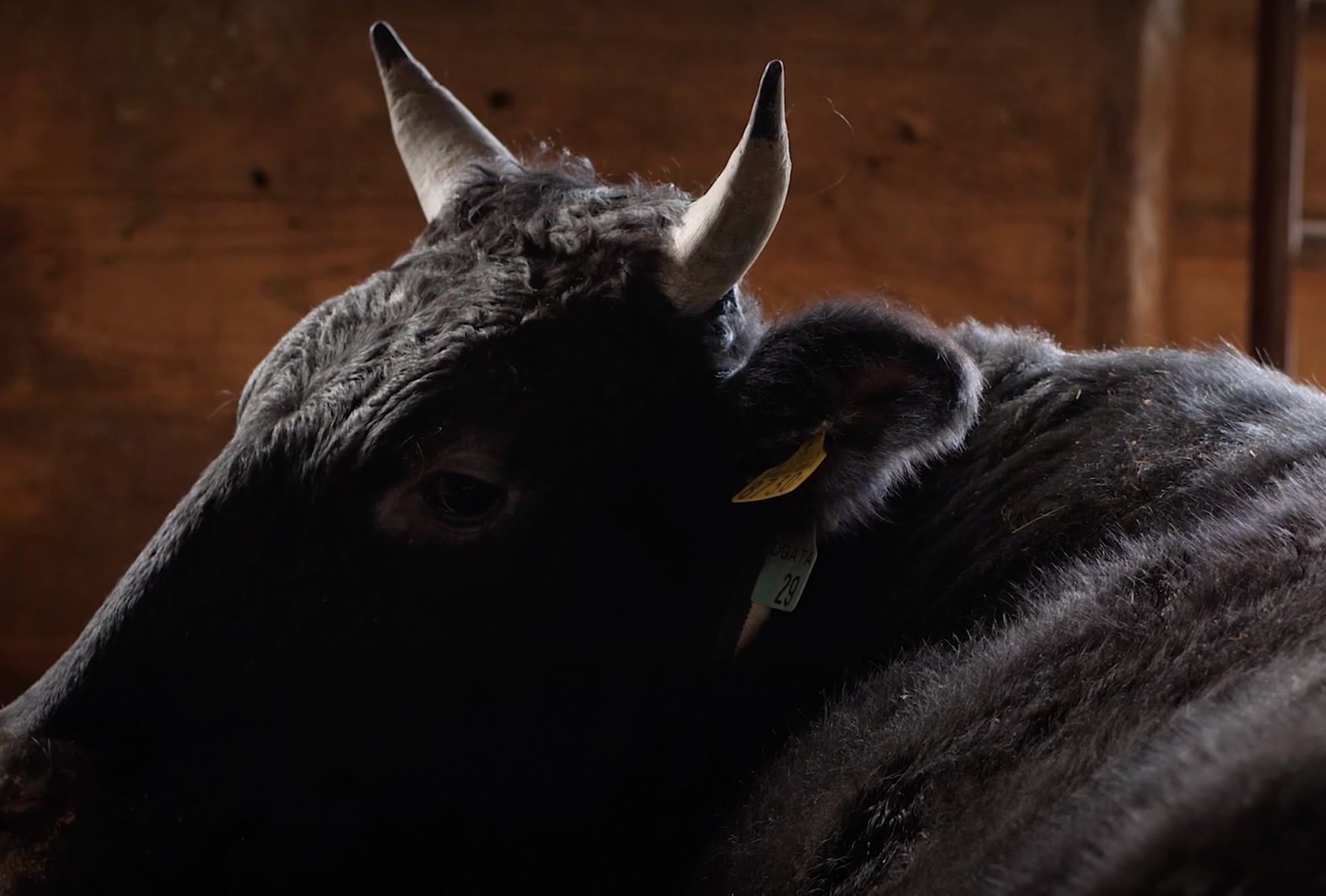
If you
are puzzled, exasperated or suspicious about
the ubiquity of the ultra-rare Japanese beef
called Kobe that now seems to appear on every
steakhouse and high-end restaurant menu in
America, you’re not alone. For more than a
decade I’ve been watching the import of true
Kobe beef by the U.S. meat industry and
restaurateurs to find it had leapt from a
minuscule amount to what seems like quite an
easy thing to order every day of the year, if
willing to pay a high price. I’ve also seen
how the names and definitions of this kind of
beef has changed to fit categories not
recognized by the USDA, which has long graded
American beef, with USDA Prime the highest
grade (though much compromised over the
years).
 Let’s
get down to basics: The word “wagyu” in Japan
means nothing more than “beef,” while the word
“Kobe” designates beef that comes from a small
number of “prefectures” in and around that city
in Hyogo Prefecture (left; below)
that breed cattle famous for their amazing
amount of intramuscular fat marbling. Wagyu beef
comes from the breeds Akaushi (Red and
Brown), Kuroushi (Black), Japanese Polled, and
Japanese Short Horned. Tajima-gyu, the only
breed that can be certified “Kobe,” is a
strain of The Black Kuroushi.
Let’s
get down to basics: The word “wagyu” in Japan
means nothing more than “beef,” while the word
“Kobe” designates beef that comes from a small
number of “prefectures” in and around that city
in Hyogo Prefecture (left; below)
that breed cattle famous for their amazing
amount of intramuscular fat marbling. Wagyu beef
comes from the breeds Akaushi (Red and
Brown), Kuroushi (Black), Japanese Polled, and
Japanese Short Horned. Tajima-gyu, the only
breed that can be certified “Kobe,” is a
strain of The Black Kuroushi.
In
1976, the U.S. began importing beef from
Japan—ironically, at the time few Japanese even
ate beef and that was imported from other
countries—but in 2010, the U.S. placed a ban on
Wagyu because of a foot-and-mouth disease
outbreak in Japan. In 2007 Kobe Beef was
registered as a Regional Corrective Trademark by
the Kobe Marketing and Distribution Promotion
Association, which awards official certificates
to designated wholesale, retail and restaurants
that can serve genuine Kobe.
In August 2012, the U.S. began allowing
small amounts of Kobe beef to be imported. Yet,
since then, what would seem to be a tsunami of
“wagyu” and “Kobe” beef has been arriving on our
shores causing a “Kobe beef mania.” Because USDA
labeling laws are very vague (non-existent when
dealing with Japanese beef), many restaurants
slap the “Kobe beef” or “Kobe-styled beef” label
on their meat and get away with it. The animals
they are selling might have been just a ¼ Wagyu
and ¾ Angus and raised in Texas, but the general
public doesn’t know the difference. A vast
majority of the wagyu cattle that you see in the
states have been crossbred with native cattle
breeds to better adapt the foreign breed to
their new environments. Or they are imported
from Australia. Some American breeders say they
have imported the Black Kuoushi cattle, but as
of 2018 Japan exported no more than 600 pounds
of Kobe beef.
To get to the
truth about the nomenclature and supply, I
interviewed Michael Coggins, founding
partner and chief operations officer at
Holy Grail Provisions, which works
directly with partner ranches and farms to
raise cattle with no hormones, no
antibiotics, sustainable pasturing, and
humane living conditions, as well as
importing Ogata Farms Kobe beef from
Japan.
1. How many authorized dealers of Kobe beef
are in the states?
This varies from the perspective of the customer.
There are fewer than 20 restaurants at any given
time that have genuine Kobe, and for years we were
the only online purveyor. A small number of our
competitors have had it for short periods but
don't tend to stock it on a regular basis. From
the restaurant side, occasionally a new location
will be brought on temporarily by an importer, so
the numbers do fluctuate for the genuine article.
We have joined the association and have the plaque
to prove it!
 2.
How
has Holy Grail managed to get access and as
much Kobe as desired for the market? The
*first-ever* shipment of authentic Ogata Farm
Maezawa beef (left)?
2.
How
has Holy Grail managed to get access and as
much Kobe as desired for the market? The
*first-ever* shipment of authentic Ogata Farm
Maezawa beef (left)?
I can't say we've gotten as much as we desire.
It's a really tough thing to keep in stock at the
levels we would like, but we were able to bring in
the largest shipment of Kobe in US history. We've
also been responsible for bringing in 2/3rds of
the BMS 12 Kobe that has ever been sold in the
US. The real answer to your question comes
down to one of our primary business objectives:
sourcing the best steaks on planet earth. We
aren't the first people to have the chance at
bringing Kobe directly to consumers, but we were
the first to do it because we wanted to build
around the idea of having the pinnacle of
beef. Can't do that without genuine Kobe.
From there, we looked at filling our portfolio
with other incredible options. Cameron's track
record as a sourcer of high-end wines was really
the template we followed to get Ogata. We talked
to the people from the town, read their stories,
studied their approach, sampled their beef, and
were blown away. Maezawa (sometimes spelled
Maesawa) beef is famous in Japan so we knew it
belonged in our portfolio.
3. Do you
work with the Kobe Beef that was registered
as a Regional Corrective Trademark by the
Kobe Marketing and Distribution Promotion
Association? 
Yep. The golden statue you see here is the one
we have in our headquarters.
4. Has
the production of Kobe soared to meet demand
and how is it possible to increase such a
rare product?
There is certainly a ceiling for production on a
product that has such stringent requirements and
is resource-heavy to produce. But I don't think
Hyogo has reached that ceiling. It's obvious
both culturally or from a business perspective
that no one is willing to lower the standards
for certified Kobe beef, but the demand is there
to produce as much as possible. Not to mention,
the cattle that fail to meet the Kobe standard
will still make incredible wagyu. Exports over
the last decade are up around 10 times, so while
there is pressure to create more, it's not even
remotely possible that Kobe could expand
production at that rate. The 2020 Japanese
export total was around 5,300 tons and there
were only 5,500 or so head of Kobe cattle last
year. (Side note about exporting: It is rare
that an entire carcass will be exported. It's
usually subprimals, and even that depends on
which global location the beef is heading
toward. USA gets ribeyes, strips, filets; Taiwan
doesn't use those expensive cuts the same way as
their dietary traditions are different.)
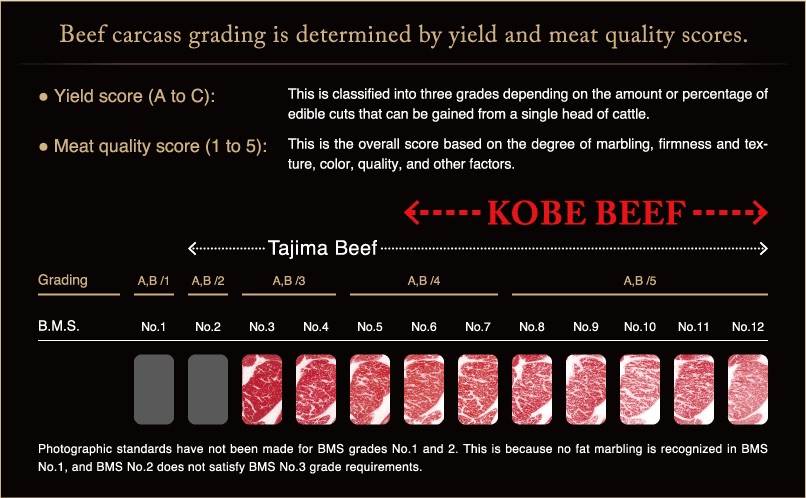 Overall
Japanese production isn't my area of expertise
as we only deal with the portion of Kobe that is
exported to the US, but that has increased over
the years along with the entire Japanese Wagyu
category. I'm confident overall production
has increased, but the American demand has grown
exponentially. I don't think demand will
be met any time soon, if ever, but it does open
the category for other amazing products in the
wagyu space. There are incredible farms
and producers across Japan who have an audience
in the US now that they didn't before, and
that's mostly due to Kobe.
Overall
Japanese production isn't my area of expertise
as we only deal with the portion of Kobe that is
exported to the US, but that has increased over
the years along with the entire Japanese Wagyu
category. I'm confident overall production
has increased, but the American demand has grown
exponentially. I don't think demand will
be met any time soon, if ever, but it does open
the category for other amazing products in the
wagyu space. There are incredible farms
and producers across Japan who have an audience
in the US now that they didn't before, and
that's mostly due to Kobe.
5. I'm
told most Kobe stays in Japan or is shipped
to Hong Kong and Singapore. How much is
available in the US?
This figure goes up every year, but not by the
same rate other wagyu availability
increases. I don't have a complete figure,
but you can bet that genuine Kobe will remain
one of the rarest, most sought-after steaks in
the US for quite some time.
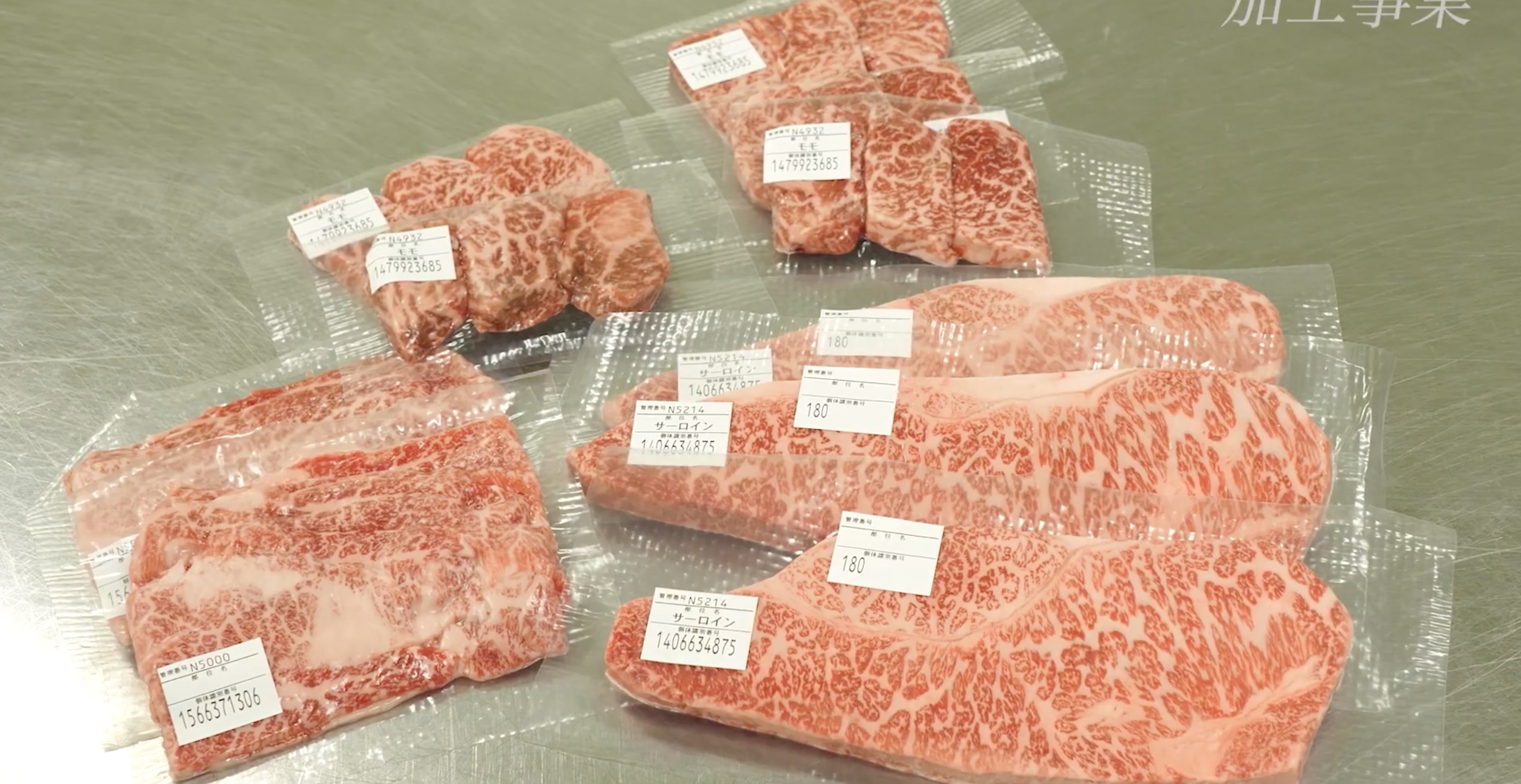 6.
Is
all Holy Grail’s meat frozen?
6.
Is
all Holy Grail’s meat frozen?
Yes; blast frozen to be precise.
After the meat is aged to perfection, it's
portioned into steaks and frozen at somewhere
between -20 and -30 degrees to preserve it in
pristine condition. Freezing that hard and
fast is key to ensuring the product retains its
quality.
7. Is there
enough Kobe to justify the claims of thousands
of restaurants claiming to serve it?
Not even close. A local burger shop in a
popular bar district near my house has what they
call a 'Kobe burger' for $18. It's not from Japan
and perhaps has some American Wagyu in it but it
is nowhere close to the real thing. We're hoping
to close this education gap but before any real
change is made, we need some help from the
Japanese government. It's very much like
Champagne; there are strict guidelines on what
really qualifies as Champagne and the alcohol
industry abides by that naming restriction. And
like Champagne,  comparing that
burger I referenced with actual Kobe is akin to
using the same description for André and Dom
Pérignon. Yes, it's 100%
possible that much A5 wagyu can be distributed
to those places because of a few things;
first, A5 wagyu and Kobe are not the same
thing. A5 Kobe is seen as the highest and
directly correlates to A5, but the letter and
number are just the Japanese grading system.
Any program in Japan that creates high-quality
beef could be graded as A5. The
question is parallel to 'Is there enough Dom
Pérignon to be in every bar that uses the word
'Champagne' on their menu?' I'd guess no, but
plenty can still have Champagne. And
even more still will have sparkling something
or other and call it Champagne, against
some pretty stringent rules.
comparing that
burger I referenced with actual Kobe is akin to
using the same description for André and Dom
Pérignon. Yes, it's 100%
possible that much A5 wagyu can be distributed
to those places because of a few things;
first, A5 wagyu and Kobe are not the same
thing. A5 Kobe is seen as the highest and
directly correlates to A5, but the letter and
number are just the Japanese grading system.
Any program in Japan that creates high-quality
beef could be graded as A5. The
question is parallel to 'Is there enough Dom
Pérignon to be in every bar that uses the word
'Champagne' on their menu?' I'd guess no, but
plenty can still have Champagne. And
even more still will have sparkling something
or other and call it Champagne, against
some pretty stringent rules.
❖❖❖
MARK'S OFF MADISON
41 Madison Avenue
646-838-8300
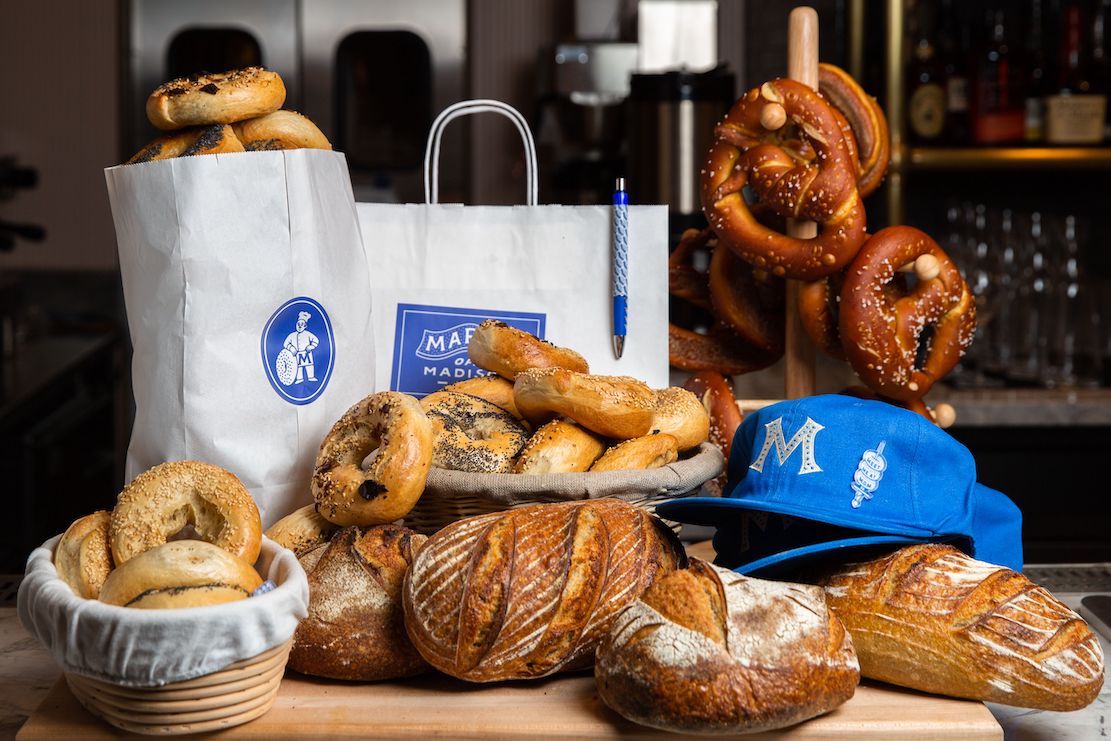
By John Mariani
Go hungry. Go very hungry. Mark’s Off
Madison (or M.O.M.), which took over A Voce,
is not a place to drop in for tapas or a
flatbread at the bar. You go with an appetite,
the fiercer the better, and you’ll leave with
enough leftovers for a plowman’s lunch. Or you
could go for the weekend brunch and relax with
bagels, bialys, latkes, nova platter, Belgian
fries and chicken soup.
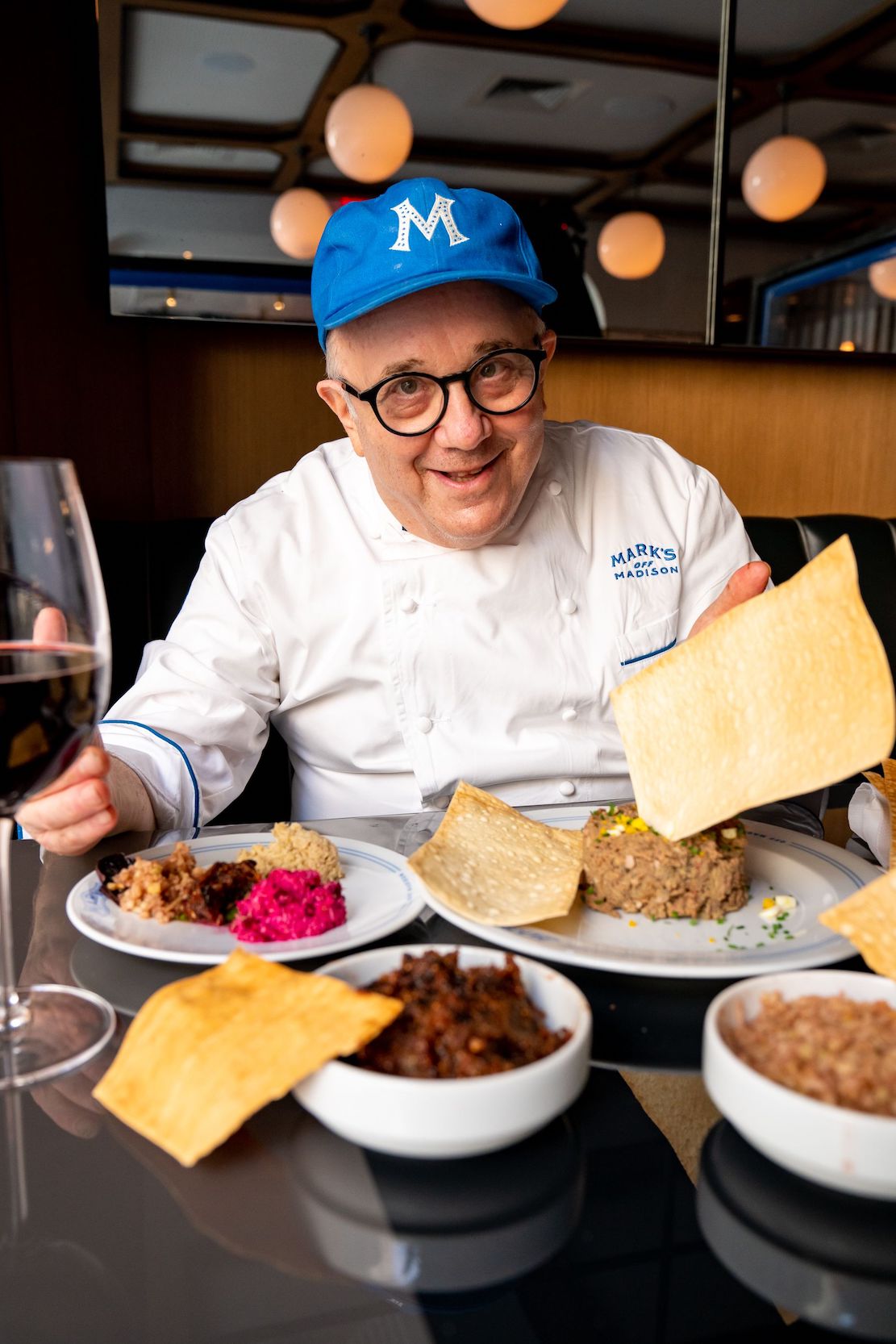 Queens-born
chef-owner Mark Strausman has never been one for
arduous tasting menus with teeny portions of
twee food, and at M.O.M. he clearly wants
everyone to order and eat with gusto, not least
a number of comfort foods from his own
Jewish-American heritage in addition to Italian
dishes on which he made his reputation.
Strausman came to first notice in the 1990s,
when he was managing partner with Pino Luongo at
Sapore di Mare in East Hampton, then Coco Pazzo.
In 1992 he was awarded Best American Chef by
Tenimenti di Barolo e Fontanafredda in Alba. He
would go on to open Campagna in Manhattan before
becoming chef of Barney’s flagship store
restaurant Fred’s on Madison Avenue, which ended
after the beleaguered company closed. Almost
immediately he signed a lease for M.O.M., which
opened in 2019 during the height of the
pandemic, but, through thick and thin, survived
with outdoor dining and delivery and now
thrives.
Queens-born
chef-owner Mark Strausman has never been one for
arduous tasting menus with teeny portions of
twee food, and at M.O.M. he clearly wants
everyone to order and eat with gusto, not least
a number of comfort foods from his own
Jewish-American heritage in addition to Italian
dishes on which he made his reputation.
Strausman came to first notice in the 1990s,
when he was managing partner with Pino Luongo at
Sapore di Mare in East Hampton, then Coco Pazzo.
In 1992 he was awarded Best American Chef by
Tenimenti di Barolo e Fontanafredda in Alba. He
would go on to open Campagna in Manhattan before
becoming chef of Barney’s flagship store
restaurant Fred’s on Madison Avenue, which ended
after the beleaguered company closed. Almost
immediately he signed a lease for M.O.M., which
opened in 2019 during the height of the
pandemic, but, through thick and thin, survived
with outdoor dining and delivery and now
thrives. 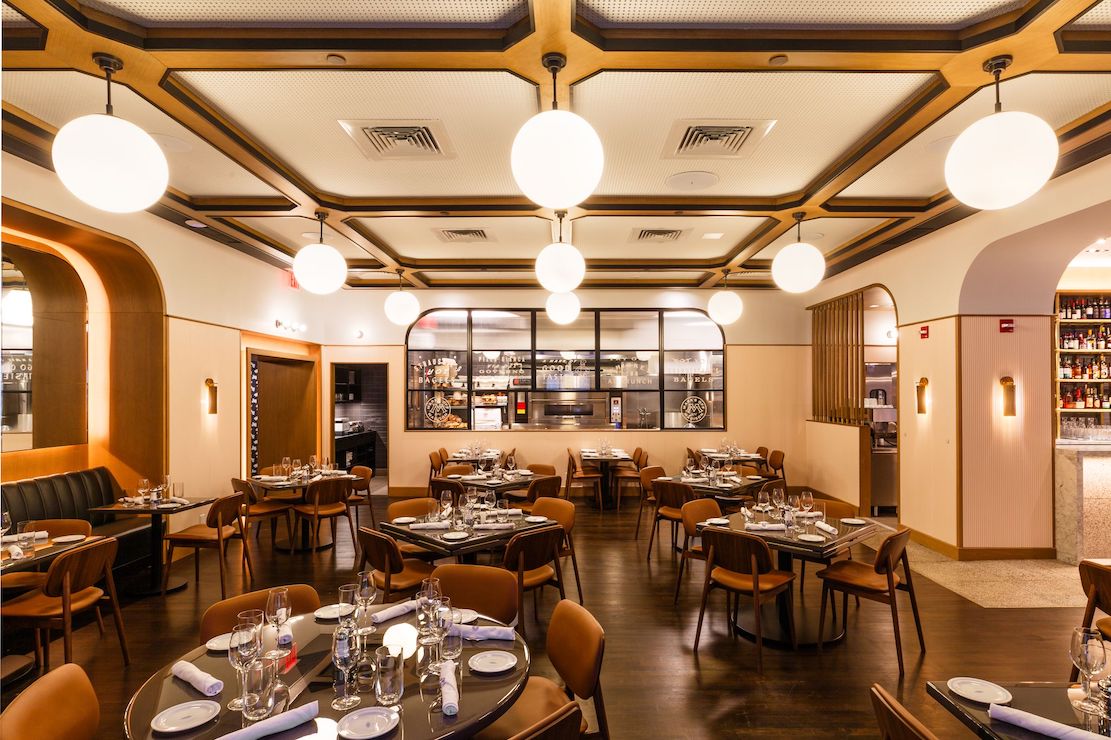
In chatting with Strausman he told me his
love of Italian food began when his Jewish
family lived down the hall from an old Italian
woman who cooked all day, every day. “I’d get
off elevator and I’d just die from the smells.
The sauce, the meatballs, the aromas were
amazing.” Now, with M.O.M., he’s combining a
long career worth of experience and innovation
into perfecting what he chooses to put on a menu
without any strict genre.
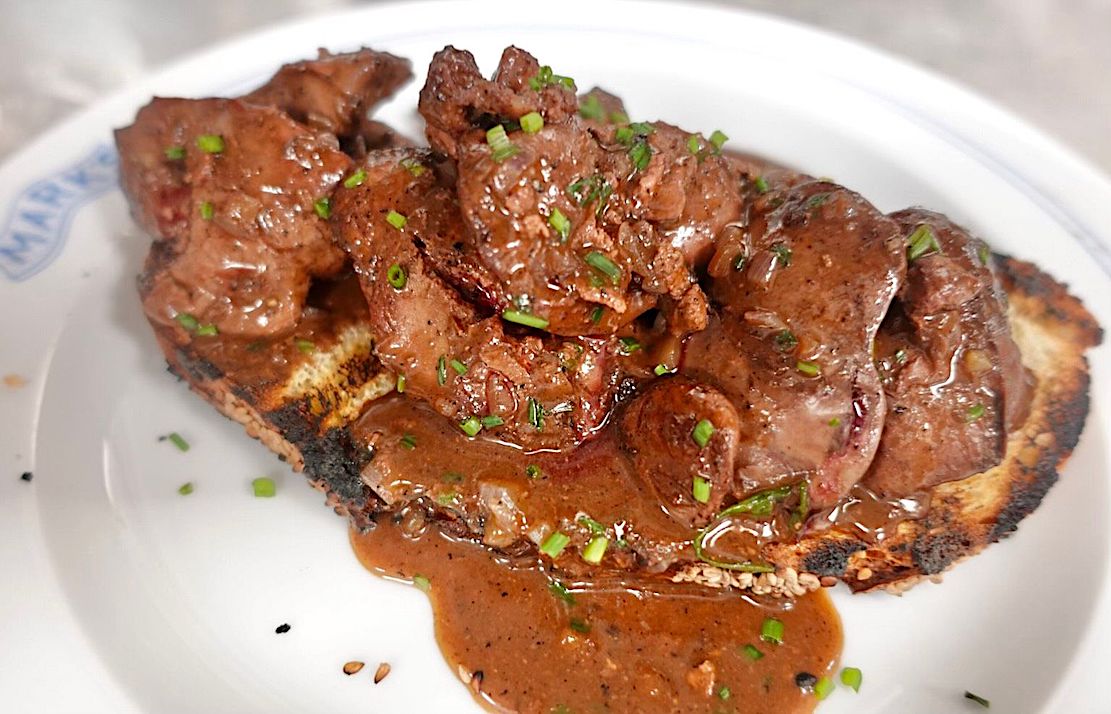 The
commodious room (with a lovely terrace out
front) has little in its beige-and-brown décor
to get excited about—the only other color is the
red neon EXIT sign—with a pleasant bar up front.
Tables are bare, surfaces hard, so there’s
nothing to soak up the noise, added to by
rock-and-roll music in the background.
Tablecloths would warm things up and might bring
down the decibel level.
The
commodious room (with a lovely terrace out
front) has little in its beige-and-brown décor
to get excited about—the only other color is the
red neon EXIT sign—with a pleasant bar up front.
Tables are bare, surfaces hard, so there’s
nothing to soak up the noise, added to by
rock-and-roll music in the background.
Tablecloths would warm things up and might bring
down the decibel level.
The
straightforward three-page menu is extensive and
portions enormous, so take seriously the printed
sentiment “WANNA SHARE IT? We’ll split it for
you, no problem!” that is at the heart of
M.O.M.’s amiable approach to service by a brisk,
affable waitstaff. (I sense that, as everywhere
these days, the industry shortage of workers
affects the number on M.O.M.’s floor; they could
use a few more.)
The menu starts off with items that
include “Estelle’s Chicken Soup” ($15), which
I’m dying to try next time, along with fried
calamari ($23) and a gargantuan platter of plump
chicken livers (left) beautifully cooked
and 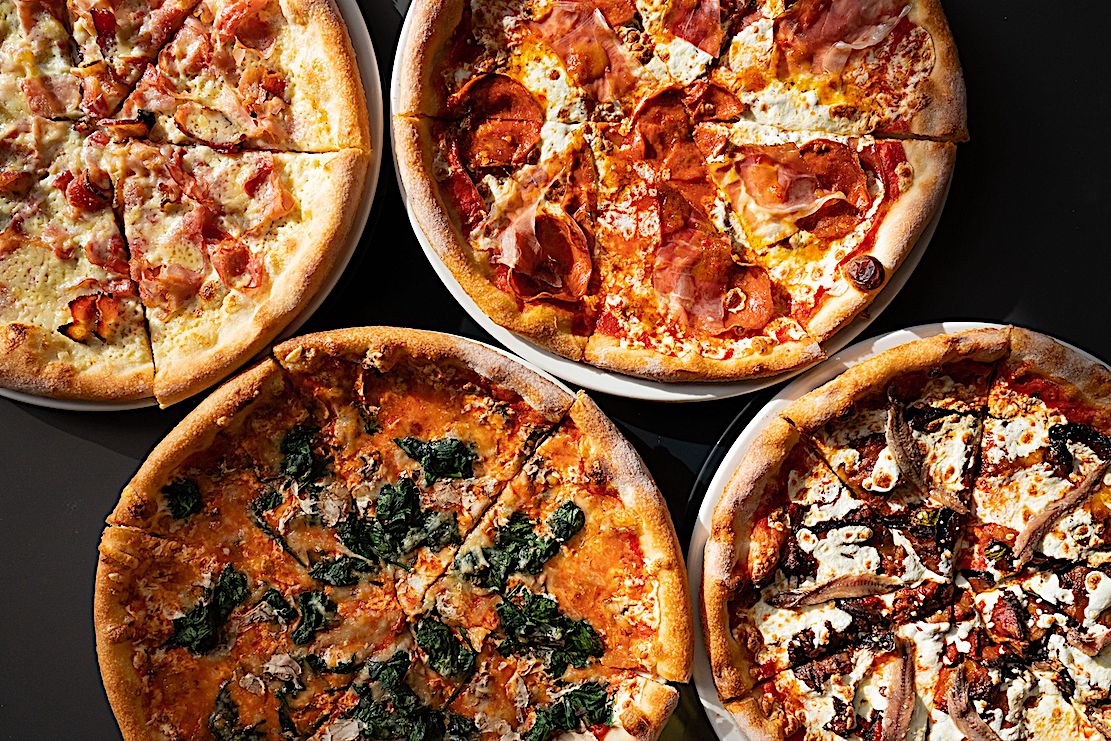 incorporated
with Port wine sauce served over sourdough
crostini ($22). I could easily have made a meal
of this rarely encountered comfort food. There
is also a New York pretzel served with mustard,
pickled vegetables and a red onion confit (a bit
pricey at ten bucks) that is softer and better
and yeastier than the often stale, hard
facsimiles sold on New York street corners,
though still shy of those inimitable examples
made by the Pennsylvania Dutch.
incorporated
with Port wine sauce served over sourdough
crostini ($22). I could easily have made a meal
of this rarely encountered comfort food. There
is also a New York pretzel served with mustard,
pickled vegetables and a red onion confit (a bit
pricey at ten bucks) that is softer and better
and yeastier than the often stale, hard
facsimiles sold on New York street corners,
though still shy of those inimitable examples
made by the Pennsylvania Dutch.
There are also several pizzas—nine of
them—from $24 to $29 that include some
intriguing toppings; I opted for one because of
its name: “The Hell’s Kitchen,” made with a fine
crust topped with cheese and tomato with local
hot and sweet sausage, roasted peppers and
onions ($26). You also get an excellent
complimentary bread basket.
Of course, Strausman’s going to serve
terrific pastas, four with dry noodles, four
fresh. The rigatoni alla buttera ($28) was an
amalgam of hot and sweet sausage, tomato, cream,
English peas and parmigiano, while the fresh tortellini
Bisi (below) were a Roman rendering
filled with ricotta and English peas, butter and
springtime’s fresh mint ($28). Lasagna
della Nonna ($27) was a hearty and hefty
portion of Italian American goodness. The prices
may seem high, but like the menu said, “WANNA
SHARE?”
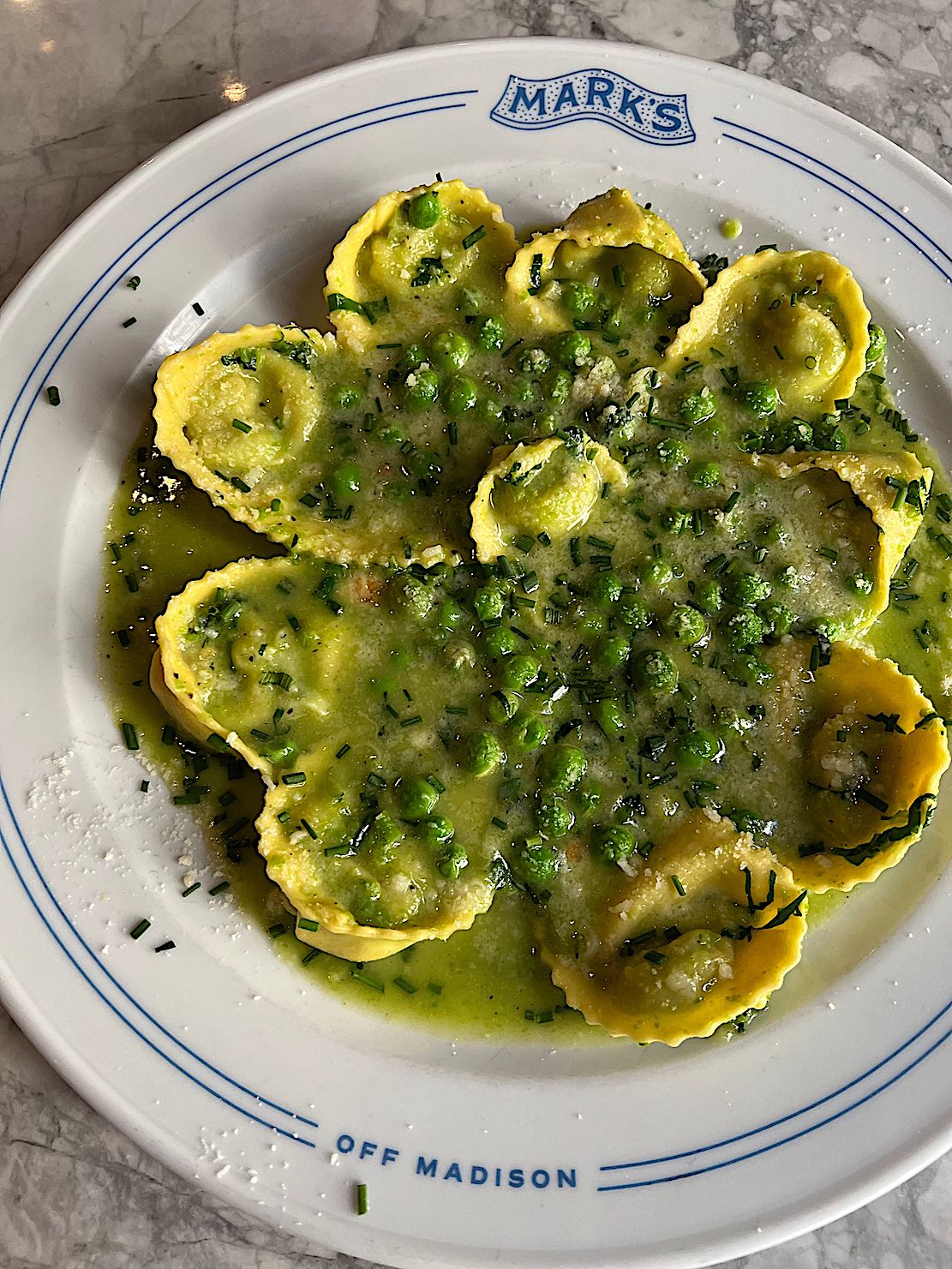 You
can get crabcakes or softshell crabs as a
starter or main course, but the generous platter
of crabcake, softshell crab, coleslaw, tartare
sauce and a mound of Belgian fries ($44), which
Strausman’s had on his menus for decades, is a
much more sensible way to go. Fillets of sole so
fat they might qualify as Dover sprawl on the
plate in a rich lemon butter sauce with
vegetables and roasted potatoes ($39). Pollo alla
mattone is flattened roast chicken, very
juicy and nicely seasoned and herbed, with the
tingle of lemon, the heat of crushed red pepper,
winter vegetables and creamy mashed potatoes
($32). The massive Cheddar cheeseburger ($27)
might have been better had I been asked how I
wanted it cooked (medium-rare) but I wasn’t and
it came out overcooked and a little dry. You get
a big cone of those great Belgian fries with it.
You
can get crabcakes or softshell crabs as a
starter or main course, but the generous platter
of crabcake, softshell crab, coleslaw, tartare
sauce and a mound of Belgian fries ($44), which
Strausman’s had on his menus for decades, is a
much more sensible way to go. Fillets of sole so
fat they might qualify as Dover sprawl on the
plate in a rich lemon butter sauce with
vegetables and roasted potatoes ($39). Pollo alla
mattone is flattened roast chicken, very
juicy and nicely seasoned and herbed, with the
tingle of lemon, the heat of crushed red pepper,
winter vegetables and creamy mashed potatoes
($32). The massive Cheddar cheeseburger ($27)
might have been better had I been asked how I
wanted it cooked (medium-rare) but I wasn’t and
it came out overcooked and a little dry. You get
a big cone of those great Belgian fries with it.
Not for a minute would you think M.O.M.
would shirk on big, child-like desserts
($6-$16.50), so be prepared to fret over what to
choose: An old-fashioned lemon icebox cake with
layered butter cookies, lemon curd and whipped
cream perhaps? Homemade Austrian brioche donuts
with plenty of yeast and rich texture? Classic
tiramisu? Or the impeccable sflogliatelle
that Strausman perfected, stuffed with
ricotta and candied fruit, of which he is very
proud after working tirelessly to get the tricky
pastry the way he knew it should be? “After I
gave up my motorcycle in mid-life,” he says, “I
decided to learn how to bake bread, because
every great restaurant in France always makes
its own bread and pastry.”
As a very New
York-style brasserie M.O.M. is as much about
customer satisfaction as good food, and you can
tell that it gets a very regular crowd. “A lot
of Millennial restaurateurs need to learn more
about hospitality,” Strausman says, “and the way
you treat people who are your guests.” That
attitude comes across at M.O.M. as surely as do
those big plates of the kind of good, honest
food that takes a lifetime of experience to get
right and keep consistent.
Open
for lunch, Tues.-Fri.; Dinner Tues.-Sat.;
Brunch Sat. & Sun.
ANOTHER VERMEER

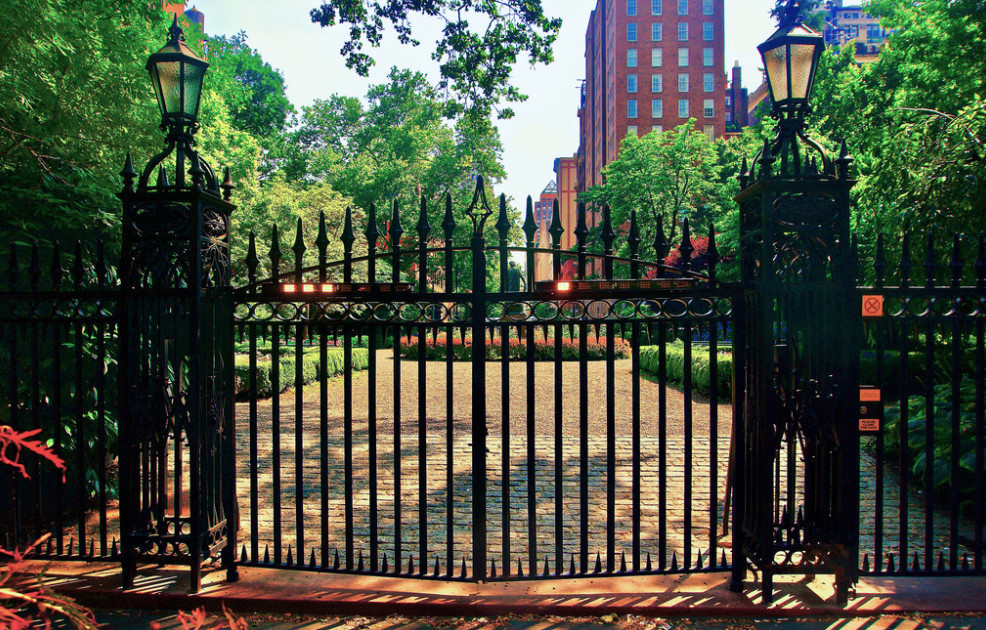
Gramercy Park, NYC
The
next day was Wednesday, when Art
Today came out, and in the issue was
another of Coleman’s profiles of the
probable bidders on the Vermeer, none of
them flattering. Profiles of Stepanossky,
Balaton, and Dorenbosch had already
appeared, and that week’s issue profiled
João Correia, though with no mention of his
being kidnapped or missing.
The reporting was solid, but as it
became apparent that all of the bidders so far
profiled had very sordid bios, supporting
commentary by the largest and most prestigious
auction houses and galleries started to dry
up. None
would admit to handling the sale—not
Christie’s, not Sotheby’s, not lesser
competitors.
In an industry that thrives on gossip
and boasting, their spokesmen simply stopped
taking questions from the press. It
was almost as if the auction was of no
importance, taking place too far away. The
truth was, the auction houses and galleries
did not want the taint the highest bidders had
acquired from the Art Today
profiles to rub off on them.
So far,
however, only Katie, David and now Gerald
Kiley had any thought there was foul play
involved. The prospective bidders were
refusing to speak to the press, but then most
of them rarely did, unless it was to brag
about a successful acquisition. Dorenbosch,
Danielides and Shui had, for the time being,
refused interviews, all claiming to be out of
their respective towns of Amsterdam, Athens
and Taipei.
But Leonard Louden of the cosmetics
fortune lived in New York and, having been
approached by Katie, whose work he knew from McClure’s,
invited her to his townhouse in the exclusive
Gramercy Park neighborhood of Manhattan (left).
David was busy with his own
investigations, so Katie did the interview
without him. Louden, who was in his sixties
and never married, received her at his front
door dressed in baggy chinos and a buttoned
down Oxford shirt—Katie knew it was Brooks
Bros. from the roll of the collar—deliberately
too large, so that it hid a good-sized paunch.
Louden was not tall, perhaps five-nine, with
closely cropped silver-white hair and a
ruddiness that seemed rubbed in, rather than
acquired from a suntan.
Katie
had learned from Coleman that Louden’s mother,
who had changed the family name from Lubovitch
when she launched her line of cosmetics in the
1950s, had left most of her fortune to her
son, while the company was run by professional
managers. Coleman estimated Louden’s worth in
excess of three billion dollars, with the
interest earned all going to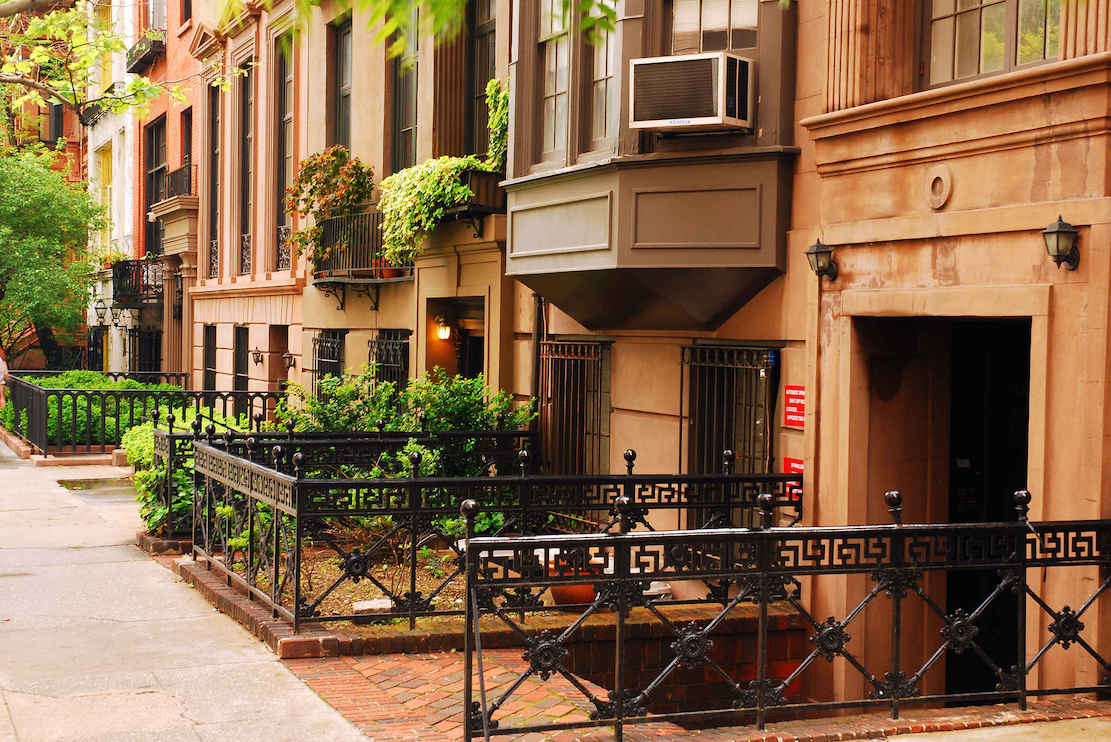 his philanthropy.
his philanthropy.
“Come in, come in,” he said. “Can I get
you some coffee, tea, water?”
“Maybe some tea, if it’s not too much
trouble,” answered Katie.
“Not at all,” he said, leading her into
a stunningly beautiful dining area and kitchen
where he proceeded to heat some water.
“Tea bags all right? Sorry, I’m not a
tea drinker so that’s all I have.”
They walked into a
two-story library room lined with new books
and bound series of a kind all rich men need
as a show of their couth and intelligence. And
in the spaces where there were no bookcases
there was artwork, much of which Katie knew on
sight. There was a Renoir nude in a lighted
alcove, a Corot landscape above the fireplace,
chalk drawings by major Renaissance artists,
and vases and objets d’art Katie could see
were of exquisite fineness.
“You’ve got an extraordinary
collection,” said Katie, trying not to gasp.
“Thank you,” said Louden. “It’s been
built up over fifty years, and I think I have
a nice balance of things I love and things I
treasure.
I’ve gotten to the age where I am much,
much less acquisitive, and I’ve probably sold
or donated half of what I once owned. I truly
believe a collector has to share his
collection, if the works are really
first-rate. And since I have no children, when
I go what’s left will be given to museums I
respect.
And, let me tell you, there are a lot I
don’t.”
 “I don’t suppose you’d say which those
are?” Katie asked, putting on a big smile she
felt Louden was probably immune to.
“I don’t suppose you’d say which those
are?” Katie asked, putting on a big smile she
felt Louden was probably immune to.
“No, but I will say
that I’ve been giving more and more to
universities with fine museums that can’t
possibly compete with bigger museums or
collectors with my resources.
possibly compete with bigger museums or
collectors with my resources. Have you ever
been to the Yale Art Gallery (left)?
It’s my alma mater. The Gallery is a great
institution, and they are very good about
lending what they own. Excellent
collection of 17th century Dutch art—all
top-notch stuff, too. They’ve
got
a Bruegel (below), a Hals, a van Dyke,
lots more.”
Turning the conversation to the Vermeer
sale, Katie asked, “Is 17th century Dutch art
one of your particular favorites?”
Louden wagged his head back and forth,
“I’d say it’s among
my favorites, but I haven’t much from that
period. And
I suppose that brings us to the purpose of
your visit, Ms. Cavuto. The Vermeer?”
“It does indeed, sir,” she replied. “Is
it something you intend to bid on?”
“Well,” he said, offering her more tea
and indicating he was not going to cut off the
conversation soon.  “What
collector wouldn’t want to own a Vermeer? This
is the first one—and we don’t really know if
it’s authentic yet—to come on the market in a
hundred something years. It’s a unique prize
for anyone who gets it. Will I bid on it? That
depends on its being declared absolutely,
positively authentic, then whether it’s in
good condition or not. I’ve
seen the photos of it, and the condition looks
good, but you really have to see it up close.
With paintings this old there’s often a
distressing amount of overpainting and
varnishing that can ruin the value of it. That
questionable Vermeer of the girl at the
virginal, well, abominable overpainting is one
of the things that’s keeping it from being
declared a Vermeer. I’d never bid on a work
like that.”
“What
collector wouldn’t want to own a Vermeer? This
is the first one—and we don’t really know if
it’s authentic yet—to come on the market in a
hundred something years. It’s a unique prize
for anyone who gets it. Will I bid on it? That
depends on its being declared absolutely,
positively authentic, then whether it’s in
good condition or not. I’ve
seen the photos of it, and the condition looks
good, but you really have to see it up close.
With paintings this old there’s often a
distressing amount of overpainting and
varnishing that can ruin the value of it. That
questionable Vermeer of the girl at the
virginal, well, abominable overpainting is one
of the things that’s keeping it from being
declared a Vermeer. I’d never bid on a work
like that.”
“So, if this new one turns out to be
the real thing, you would bid on it?”
Louden shook his head again, looked
intensely at Katie and said, “Just between you
and me, Ms. Cavuto, I’d give my right arm for
it. To
own a Vermeer is to own one of the rarest
great things on earth.”
Katie knew Louden wanted to say more,
so she felt fairly safe asking, “Would you pay
$100 million for it?”
Louden said, “The work is . . . priceless,”
whispering the last word. “If it’s not in a
league with the Mona Lisa
or a Velasquez portrait, it’s pretty damn
close.”
Then he asked, “May I call you Katie?”
Katie nodded, “Of course.”
“Well, it’s almost eleven o’clock, and
I always
walk around Gramercy Park half a dozen times
at eleven o’clock every day I’m in New York. Partly
exercise, partly because I never get tired of
the beauty of this little oasis I live in.
Would you like to join me? We can keep on
talking about Vermeer, if you like.”
 The
two-centuries-old Gramercy Park was actually a
little, gated private oasis surrounded by 39
buildings that form an extremely affluent,
leafy neighborhood of about two acres.
Residents all have a special key to enter the
park.
The
two-centuries-old Gramercy Park was actually a
little, gated private oasis surrounded by 39
buildings that form an extremely affluent,
leafy neighborhood of about two acres.
Residents all have a special key to enter the
park.
It was warm out.
“We can walk the perimeter on the
sidewalks,” said Louden, “or we can go inside
the gates and walk or sit. You need a key, you
know, to get in.
What’s your pleasure, Katie?”
Louden was standing at the curb facing
Katie and the townhouse, when suddenly they
heard a black town car double parked half a
block away rev its engine and start forward
fast. Katie grabbed Louden by his right
shoulder and screamed, “Watch out!” as the car
careened towards him. Louden was pulled onto
the sidewalk but the car sideswiped him,
hitting his left hip and arm and flipping his
body back onto the curb.
He was down and writhing in pain. Katie
watched the car race away, barely slowing down
to get out of the square. She
caught a glimpse of the license
plate—DPL-452PRC—then knelt down to tend to
Louden and called 911.
“Mr. Louden, can you speak to me?” she
cried.
He was in terrible pain but was able to
nod to Katie. Within thirty seconds a Gramercy
Park security man was at their side; within
three minutes two police cars and an ambulance
were on the scene, EMTs lifting Louden onto a
rolling stretcher and loading him into the
back, driving off to the hospital along with
one of the police cars. Two
others had entered the park, their lights and
sirens blazing.
Officers piled out and bounded over to
Katie.
“Ma’am, you all right” asked an
officer.
“Yeah, yeah, I’m fine.”
“You didn’t get hit anywhere? Are you
dizzy?”
“No, no, I’m fine. I’m just shaken,
that’s all.”
After Katie calmed down after a few
minutes, the police started to take down her
story of what happened, and she gave them the
license plate number she’d seen.
One cop looked at the others, and asked
Katie, “Ma’am, are you sure that’s the number
you saw?”
“Positive,” she replied, their not
knowing her reporter’s instinct had kicked
right in. “DPL-452PRC.”
The officer turned to her partners and
said, “Those were diplomatic plates.”
“Yeah,” said another cop. “And PRC
stands for People’s Republic of China.”
© John Mariani, 2016
❖❖❖
WINES FOR A FATHER'S DAY BBQ
By John Mariani
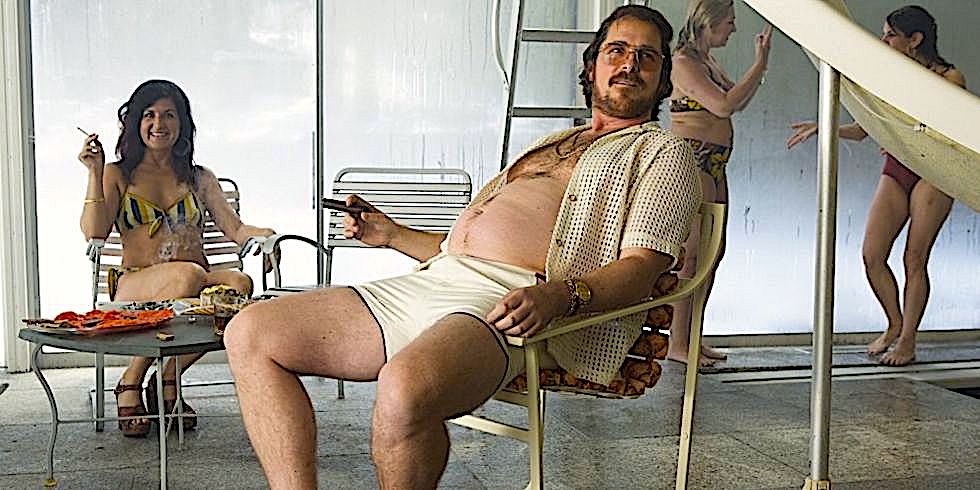 Believe me, I am not
so obtuse as to think that all American dads want to
drink big, bold, manly red wines for Father’s Day, but
let me approach the subject via the prevalence of
outdoor barbecues on that special day, when burgers,
franks, steaks, wings and ribs are the meal items of
choice. That said, there are a lot of wines that do
not go well with such food because the charring you
get from a grill, the marinades used and the spicy
sauces accompanying them simply do not lend themselves
to popping the cork on a $150 bottle of white
Burgundy. Such
food needs a foil, either one that enhances the
infused flavors or acts as a balance. Here are the
wines I’ve urged my own two sons to pluck from the
wine cellar (inevitably my own) to serve on that day
I’m encouraged to sit back and enjoy while my
granddaughters run me ragged.
Believe me, I am not
so obtuse as to think that all American dads want to
drink big, bold, manly red wines for Father’s Day, but
let me approach the subject via the prevalence of
outdoor barbecues on that special day, when burgers,
franks, steaks, wings and ribs are the meal items of
choice. That said, there are a lot of wines that do
not go well with such food because the charring you
get from a grill, the marinades used and the spicy
sauces accompanying them simply do not lend themselves
to popping the cork on a $150 bottle of white
Burgundy. Such
food needs a foil, either one that enhances the
infused flavors or acts as a balance. Here are the
wines I’ve urged my own two sons to pluck from the
wine cellar (inevitably my own) to serve on that day
I’m encouraged to sit back and enjoy while my
granddaughters run me ragged.
CANA LE MARIAGE 2019 ($48)— One of many fine wines now coming
out of Virginia (this one was included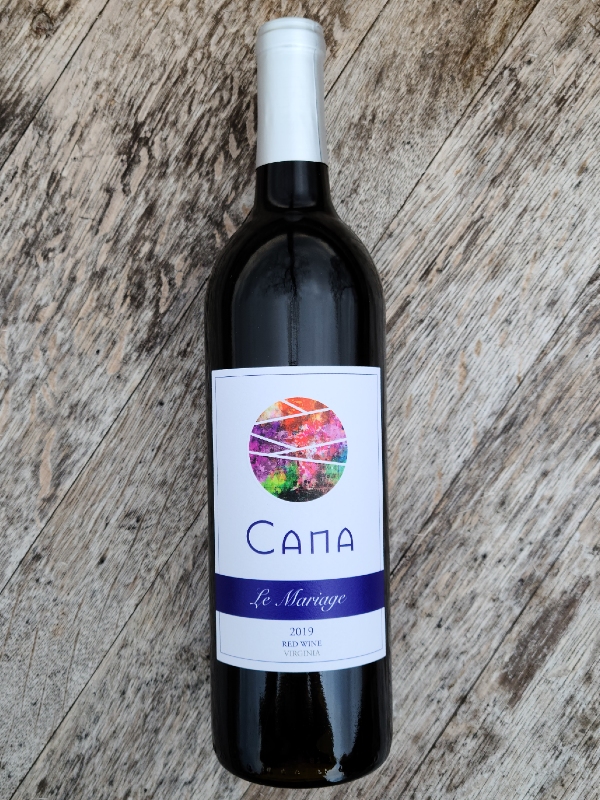 in the Virginia
Governor’s Cup 2022
exhibition), Cana’s Bordeaux blend, at just 14.2%
alcohol, with 43% Cabernet Sauvignon, 22% Merlot, 14%
Malbec, 14% Petit Verdot and 7% Cabernet Franc, has
plenty of complexity after spending 16 months in
French oak. In 2017 Cana’s Melanie Natoli was named
Woman Winemaker of the Year, and this shows evidence
of being a very carefully crafted red wine.
in the Virginia
Governor’s Cup 2022
exhibition), Cana’s Bordeaux blend, at just 14.2%
alcohol, with 43% Cabernet Sauvignon, 22% Merlot, 14%
Malbec, 14% Petit Verdot and 7% Cabernet Franc, has
plenty of complexity after spending 16 months in
French oak. In 2017 Cana’s Melanie Natoli was named
Woman Winemaker of the Year, and this shows evidence
of being a very carefully crafted red wine.
MACROSTIE THE KEY CHARDONNAY 2019 ($70)—If seafood, especially
crustaceans, are on the menu, this bold Chardonnay
from Sonoma will be a fine complement, with components
of citrus and ripe fruit along with a formidable
bouquet. Founder Steve MacRostie draws from five
vineyards—Olivet Lane, Bacigalupi, the Frost Ranch,
Dale Ricci, Brockton and Shop—each providing nuance
and arriving at 14.1% alcohol.
CHASING RAIN CABERNET SAUVIGNON
MOUNTAIN RED 2019 ($25)—If
you like a big, bold, very fruity style of a
Washington State Cab at a good price, this will do the
trick for everyone at the table. At 95%
Cabernet Sauvignon with just 3% Malbec and 2% Petit
Verdot, at a solid 14.5% alcohol, it’s meant to go
with chargrilled beef and well-seasoned pork ribs.
 J. CHRISTOPHER
KOLB VINEYARD DUNDEE HILLS PINOT NOIR 2018 ($40)—The fact that this Oregon Pinot
Noir is unfiltered means it’s got both richness,
texture and a bit more tannin but sensible 13.5%
alcohol, and Ernst Loosen proudly copies the standard
of Pommard, using that region’s grafts and Old World
methods. It shows in the silky beauty and spirit of
the wine, and with red meats and chicken it will do
justice.
J. CHRISTOPHER
KOLB VINEYARD DUNDEE HILLS PINOT NOIR 2018 ($40)—The fact that this Oregon Pinot
Noir is unfiltered means it’s got both richness,
texture and a bit more tannin but sensible 13.5%
alcohol, and Ernst Loosen proudly copies the standard
of Pommard, using that region’s grafts and Old World
methods. It shows in the silky beauty and spirit of
the wine, and with red meats and chicken it will do
justice.
BLACKBIRD VINEYARDS CONTRARIAN ($135)—Assuming Dad is a connoisseur,
this brawny Oakville blend of 70% Cabernet Sauvignon,
29% Cabernet Franc and just 1% Merlot “flouts
convention,” according to the label, though with just
14.1% alcohol it’s not a bludgeon. The fruit, acids
and tannins are all in equilibrium, so if you’re
serving some form of super-fatted wagyu beef, this is
a wine to bolster the experience.
BERONIA GRAN RESERVA RIOJA 2013 ($30) —First of all, it’s a bargain
price; second, if you’re going to be serving lamb,
this is what a Spanish
cook would open. Velvety and now at its peak after a
decade, it’s a little high for a 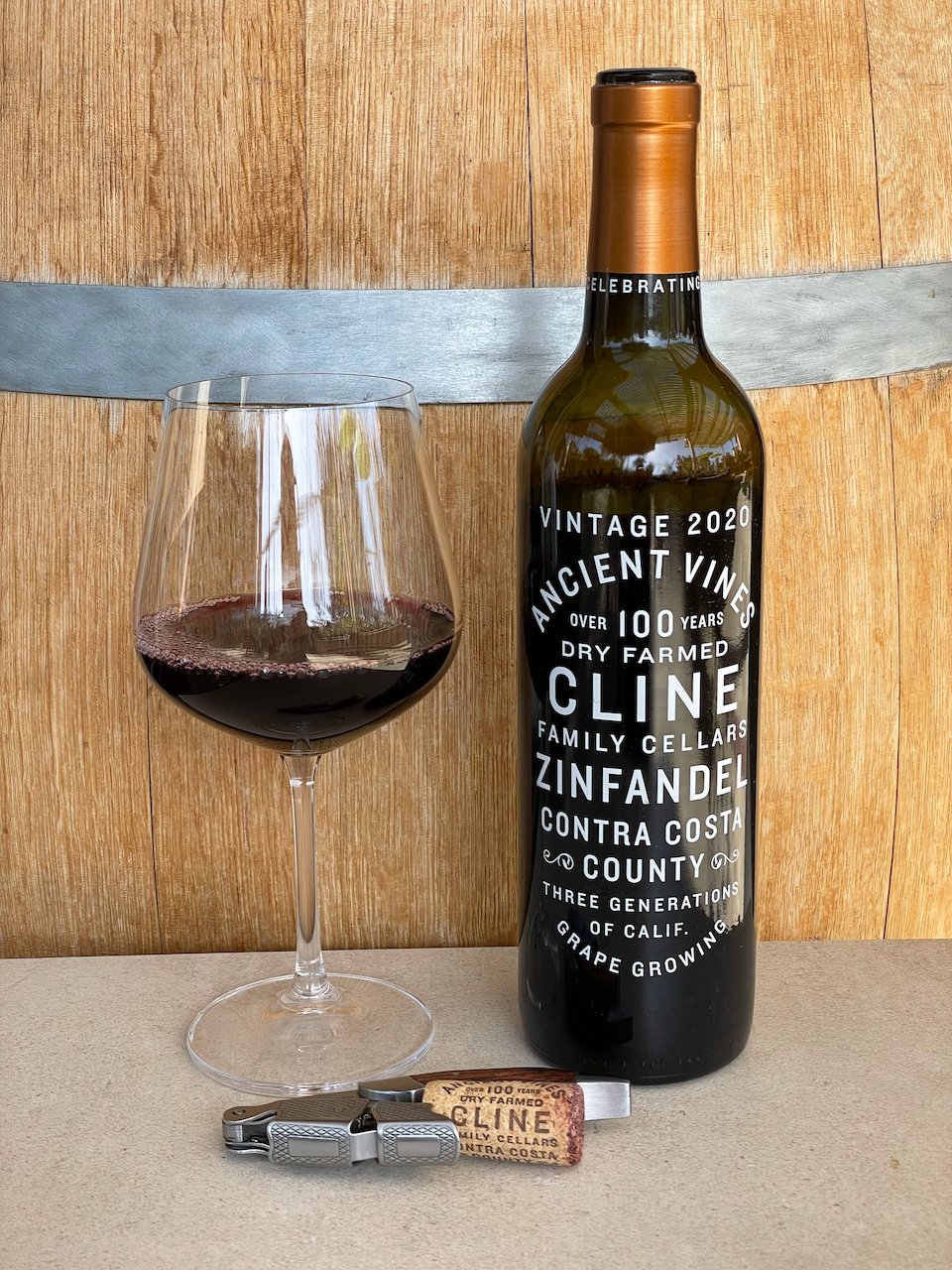 Rioja in alcohol at
14.5% but there’s plenty of layers of flavor.
Rioja in alcohol at
14.5% but there’s plenty of layers of flavor.
CLINE FAMILY CELLARS ANCIENT VINES
ZINFANDEL 2020 ($10) — Old vine (or “ancient”)
zinfandels don’t require a lot of bottle time to age
well; they’re ready to go within a vintage year or
two, and this big beauty shows off all its charms and
depth of dark fruit with a whopping 15% alcohol. If
you’re serving hot Buffalo chicken wings, this is the
way to go. And I’m seeing it in stores for under ten
bucks!
QUIPÉ SYRAH 2019 ($20) — From Paso
Robles on the Central Coast, this is the kind of Syrah
that nods to its Rhône Valley cousins but retains its
own character after a longer hang-time. The richness
of the Syrah is tempered by some Grenache, Mourvèdre
and Viognier, so it will be a good match for burgers
and hot dogs with ketchup and French fries.
❖❖❖
 RUN
THAT BY US AGAIN. . .
RUN
THAT BY US AGAIN. . .
“This place feels more like a dining room in
someone's house than a restaurant, and that might
make you feel more relaxed as you're explaining why
you're a 'song writer' who majored in biology.”—"Gem Wine:The
Best NYC Restaurants for a Romantic Date,”
by BRYAN KIM, KATHERINE LEWIN & KENNY
YANG, The Infatuation.
❖❖❖
Any of John Mariani's books below may be ordered from amazon.com.
 The Hound in Heaven
(21st Century Lion Books) is a novella, and
for anyone who loves dogs, Christmas, romance,
inspiration, even the supernatural, I hope you'll find
this to be a treasured favorite. The story
concerns how, after a New England teacher, his wife and
their two daughters adopt a stray puppy found in their
barn in northern Maine, their lives seem full of promise.
But when tragedy strikes, their wonderful dog Lazarus and
the spirit of Christmas are the only things that may bring
his master back from the edge of despair.
The Hound in Heaven
(21st Century Lion Books) is a novella, and
for anyone who loves dogs, Christmas, romance,
inspiration, even the supernatural, I hope you'll find
this to be a treasured favorite. The story
concerns how, after a New England teacher, his wife and
their two daughters adopt a stray puppy found in their
barn in northern Maine, their lives seem full of promise.
But when tragedy strikes, their wonderful dog Lazarus and
the spirit of Christmas are the only things that may bring
his master back from the edge of despair. WATCH THE VIDEO!
“What a huge surprise turn this story took! I was completely stunned! I truly enjoyed this book and its message.” – Actress Ali MacGraw
“He had me at Page One. The amount of heart, human insight, soul searching, and deft literary strength that John Mariani pours into this airtight novella is vertigo-inducing. Perhaps ‘wow’ would be the best comment.” – James Dalessandro, author of Bohemian Heart and 1906.
“John Mariani’s Hound in Heaven starts with a well-painted portrayal of an American family, along with the requisite dog. A surprise event flips the action of the novel and captures us for a voyage leading to a hopeful and heart-warming message. A page turning, one sitting read, it’s the perfect antidote for the winter and promotion of holiday celebration.” – Ann Pearlman, author of The Christmas Cookie Club and A Gift for my Sister.
“John Mariani’s concise, achingly beautiful novella pulls a literary rabbit out of a hat – a mash-up of the cosmic and the intimate, the tragic and the heart-warming – a Christmas tale for all ages, and all faiths. Read it to your children, read it to yourself… but read it. Early and often. Highly recommended.” – Jay Bonansinga, New York Times bestselling author of Pinkerton’s War, The Sinking of The Eastland, and The Walking Dead: The Road To Woodbury.
“Amazing things happen when you open your heart to an animal. The Hound in Heaven delivers a powerful story of healing that is forged in the spiritual relationship between a man and his best friend. The book brings a message of hope that can enrich our images of family, love, and loss.” – Dr. Barbara Royal, author of The Royal Treatment.
 |
The Encyclopedia of American Food and Drink by John F. Mariani (Bloomsbury USA, $35) Modesty forbids me to praise my own new book, but let me proudly say that it is an extensive revision of the 4th edition that appeared more than a decade ago, before locavores, molecular cuisine, modernist cuisine, the Food Network and so much more, now included. Word origins have been completely updated, as have per capita consumption and production stats. Most important, for the first time since publication in the 1980s, the book includes more than 100 biographies of Americans who have changed the way we cook, eat and drink -- from Fannie Farmer and Julia Child to Robert Mondavi and Thomas Keller. "This book is amazing! It has entries for everything from `abalone' to `zwieback,' plus more than 500 recipes for classic American dishes and drinks."--Devra First, The Boston Globe. "Much needed in any kitchen library."--Bon Appetit. |
"Eating Italian will never be the same after reading John Mariani's entertaining and savory gastronomical history of the cuisine of Italy and how it won over appetites worldwide. . . . This book is such a tasteful narrative that it will literally make you hungry for Italian food and arouse your appetite for gastronomical history."--Don Oldenburg, USA Today. "Italian
restaurants--some good, some glitzy--far
outnumber their French rivals. Many of
these establishments are zestfully described
in How Italian Food Conquered the World, an
entertaining and fact-filled chronicle by
food-and-wine correspondent John F.
Mariani."--Aram Bakshian Jr., Wall Street
Journal.
"Equal parts
history, sociology, gastronomy, and just
plain fun, How Italian Food Conquered the
World tells the captivating and delicious
story of the (let's face it) everybody's
favorite cuisine with clarity, verve and
more than one surprise."--Colman Andrews,
editorial director of The Daily
Meal.com. "A fantastic and fascinating
read, covering everything from the influence
of Venice's spice trade to the impact of
Italian immigrants in America and the
evolution of alta cucina. This book will
serve as a terrific resource to anyone
interested in the real story of Italian
food."--Mary Ann Esposito, host of PBS-TV's
Ciao
Italia. "John Mariani has written the
definitive history of how Italians won their
way into our hearts, minds, and
stomachs. It's a story of pleasure over
pomp and taste over technique."--Danny Meyer,
owner of NYC restaurants Union Square
Cafe, The Modern, and Maialino.
|
 |
 |
 |
 |
 |
 |
 Everett Potter's Travel Report:
Everett Potter's Travel Report: 
 Eating Las
Vegas JOHN CURTAS has been covering
the Las Vegas food and restaurant scene
since 1995. He is the co-author of EATING LAS
VEGAS – The 50 Essential Restaurants (as
well as the author of the Eating Las
Vegas web site: www.eatinglasvegas.
He can also be seen every Friday morning as
the “resident foodie” for Wake Up With the
Wagners on KSNV TV (NBC) Channel 3 in
Las Vegas.
Eating Las
Vegas JOHN CURTAS has been covering
the Las Vegas food and restaurant scene
since 1995. He is the co-author of EATING LAS
VEGAS – The 50 Essential Restaurants (as
well as the author of the Eating Las
Vegas web site: www.eatinglasvegas.
He can also be seen every Friday morning as
the “resident foodie” for Wake Up With the
Wagners on KSNV TV (NBC) Channel 3 in
Las Vegas.
MARIANI'S VIRTUAL GOURMET
NEWSLETTER is published weekly. Publisher: John Mariani. Editor: Walter Bagley. Contributing Writers: Christopher
Mariani, Misha Mariani, John A. Curtas, Gerry Dawes, Geoff Kalish.
Contributing
Photographer: Galina Dargery. Technical
Advisor: Gerry
McLoughlin.
If you wish to subscribe to this
newsletter, please click here: http://www.johnmariani.com/subscribe/index.html
© copyright John Mariani 2022

